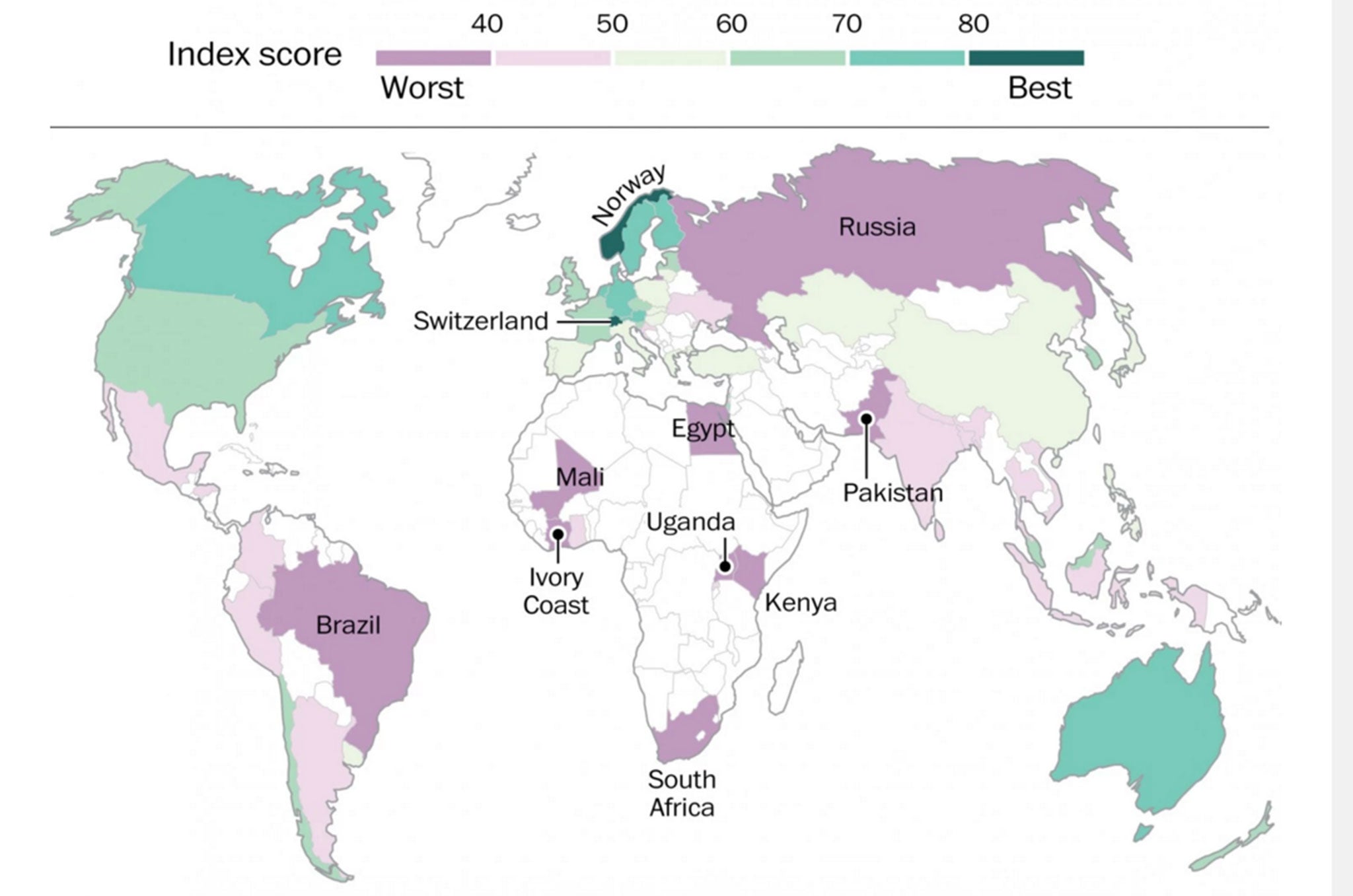One map that shows the best – and worst – countries to live in if you're young
Researchers used 59 indicators to rank countries on youth optimism, as well as health, educational opportunities and access to employment

Your support helps us to tell the story
From reproductive rights to climate change to Big Tech, The Independent is on the ground when the story is developing. Whether it's investigating the financials of Elon Musk's pro-Trump PAC or producing our latest documentary, 'The A Word', which shines a light on the American women fighting for reproductive rights, we know how important it is to parse out the facts from the messaging.
At such a critical moment in US history, we need reporters on the ground. Your donation allows us to keep sending journalists to speak to both sides of the story.
The Independent is trusted by Americans across the entire political spectrum. And unlike many other quality news outlets, we choose not to lock Americans out of our reporting and analysis with paywalls. We believe quality journalism should be available to everyone, paid for by those who can afford it.
Your support makes all the difference.Three years ago, columnist Felix Marquardt published a series of provocative essays that urged young people to leave France because he said they had no future there. “There's no room for young people in France. And the only way to make politicians listen to them is by leaving the country,” Marquardt said during a recent interview.
Among the challenges he listed: Young people in France face high unemployment, limited social mobility and a lack of access to top-tier higher education.
Soon after publishing his op-eds, Marquardt and his team decided to expand their research. Using data from international organizations like the World Bank, Unesco and the OECD, he and his team identified 64 nations for which a sufficient amount of reliable and comparable information was available. The team then used 59 indicators to rank the countries, based on their surveys on optimism among the youth, but also on harder data measuring health, educational opportunities, and access to employment, for instance. They focused on people younger than 25.
Some of the findings of the so-called Youthonomics index are hardly surprising. Norway, Switzerland, Sweden, Denmark and the Netherlands are the world's youth-friendliest countries. Many young people face a lack of prospects in parts of Africa and Asia. In many regards, the index is a reflection of a country's economic position: Richer or economically expanding countries will always find it easier to attract young people.
There is certainly no magic way to become a youth-friendly nation. But Marquardt and his team say success primarily depends on two factors: Whether a country is willing to transform itself to appeal to younger people, and whether it is economically capable of doing so — although wealth alone does not guarantee a high ranking.
“Let young people go abroad!”
“For instance, young Swedes are offered the opportunity to take a sabbatical year to explore different professions and countries,” he said. “Moreover, Norway and Sweden mutualize unemployment data. If there is an unfilled job in Sweden, young Norwegians can be paid to move into their neighboring country to fill that position.”
“Let young people go abroad,” Marquardt writes. “Many of them will come back to their home countries because they miss them, but they will be equipped with new experiences and knowledge they picked up abroad.”
The United States, Australia and some other countries already invite young workers to apply for “work and travel” visas. According to Marquardt, work visas for younger generations should be made available in more countries.
Surprisingly, China outranks Spain
Many developing countries struggle to offer younger citizens future prospects, according to the index, but China appears to be an exception. Partly due to its efforts to alleviate poverty, and its willingness to invest in education, China has become particularly attractive to young people. It has even outranked European nations such as Spain, Croatia and Italy.
Chile outranks other South American nations in the index, and the authors consider it to be one of the world's most youth-friendly countries.
On Monday, a separate study conducted by the Bertelsmann Foundation suggested that southern European countries in particular might indeed fail their next generations. About 30 per cent of Europeans younger than 18 are affected by poverty and exclusion, according to the report. Many of those most at risk come from countries such as Italy where youth unemployment continues to stand at around 40 per cent. However, even in prosperous Germany, one in five young citizens lives in poverty — due in part to salaries that are too low to cover living expenses.
Labour unions can make a difference
One prime example for a country where both youth unemployment rates and poverty are low is Austria. Johannes Kopf, a member of the board of directors at the Austrian Public Employment Service, explained in a recent blog post what he considered to be particularly decisive for Austria's low youth unemployment rates: job flexibility and an education system that allows young people to remain in school while they also take on apprenticeships at companies, among other things.
Job flexibility depends on the willingness of labour unions to give up some of the job securities of their members, who are typically older. That is why labor unions could be key to understanding a country's attractiveness for younger workers. “We noticed that nations where labor unions also advocate for those who are unemployed performed much better in our index,” Marquardt said.
Copyright: Washington Post
Join our commenting forum
Join thought-provoking conversations, follow other Independent readers and see their replies
Comments